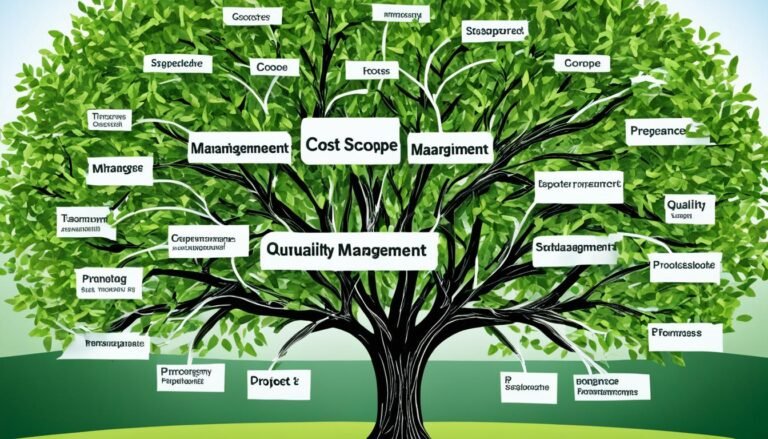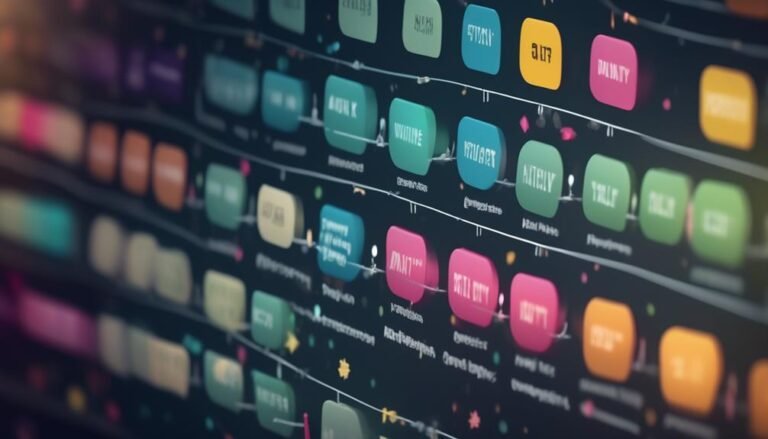Understanding Burndown Charts in Agile Project Management
Agile project management has gained significant popularity in recent years due to its ability to promote flexibility and adaptability in the face of changing project requirements.
One essential tool in this methodology is the burndown chart, a visual representation of a team's progress over time. While it may seem like just another chart, understanding the nuances of burndown charts is crucial for project managers and team members alike.
This powerful tool provides valuable insights into project progress, helps identify potential bottlenecks, and facilitates effective decision-making.
By examining the components, interpreting the trends, and addressing the challenges associated with burndown charts, project teams can ensure better project planning, execution, and delivery.
Curious to know more? Let's dive into the world of burndown charts and uncover their true potential in agile project management.
Key Takeaways
- Burndown charts help visualize and track project progress, enabling informed decision-making and resource allocation.
- They promote transparency, shared responsibility, and communication among team members.
- Burndown charts help identify potential issues and bottlenecks, facilitating early problem identification and resolution.
- Regularly updating and analyzing the chart, as well as understanding trends and patterns, can lead to better decision-making and improved project outcomes.
Benefits of Burndown Charts
One of the key advantages of utilizing burndown charts in Agile project management is the ability to visualize and track the progress of a project in a clear and concise manner. Burndown charts provide a visual representation of the work remaining against the time available, allowing project teams to monitor their progress and make informed decisions.
By tracking progress using a burndown chart, project managers can easily identify if the team is on track to meet their goals. The chart shows the ideal progress line, which represents the planned work to be completed, and the actual progress line, which reflects the work completed so far. If the actual progress line is consistently below the ideal line, it indicates that the project is falling behind schedule. Conversely, if the actual progress line consistently exceeds the ideal line, it suggests that the team is ahead of schedule. This information enables project managers to take necessary actions and make adjustments to ensure the project stays on track.
Furthermore, the visual representation of a burndown chart allows for easy communication and collaboration between team members and stakeholders. Everyone involved in the project can quickly understand the status of the work and the remaining tasks. This promotes transparency and fosters a sense of shared responsibility among team members.
Components of a Burndown Chart
The components of a burndown chart provide valuable insights into the progress of a project and help teams effectively track their work. By tracking progress, teams can visualize the remaining work and compare it with the planned work. This allows them to identify any deviations from the original plan and take corrective actions if necessary.
The first component of a burndown chart is the x-axis, which represents time. It is divided into iterations or sprints, showing the duration of the project. The y-axis represents the amount of work remaining. It can be measured in story points, hours, or any other unit that the team finds suitable.
The burndown line is another crucial component. It shows the ideal progress of the project, assuming that the team completes the planned work at a consistent pace. As the team completes tasks, the actual progress is plotted on the chart. Comparing the actual progress with the ideal progress allows teams to identify bottlenecks or areas where they are falling behind schedule.
In addition to these components, some burndown charts also include a scope change line. This line represents any changes made to the project's scope during the course of the project. It helps teams understand the impact of scope changes on the overall progress and adjust their plans accordingly.
Interpreting Burndown Charts
When interpreting burndown charts, teams can gain valuable insights into the progress of their project and make informed decisions based on the visual representation of remaining work and deviations from the original plan. The burndown chart provides a clear and concise overview of the project's progress over time, allowing teams to identify trends and patterns that can help them improve their project management strategies.
To effectively interpret burndown charts, it is important to consider the following key metrics:
- Remaining work: This metric shows the amount of work that still needs to be completed in order to achieve the project's goals. Teams can assess whether they are on track to meet their targets or if adjustments need to be made.
- Deviation from the original plan: By comparing the actual progress with the planned progress, teams can identify any deviations and understand the reasons behind them. This allows for timely corrective actions to be taken.
In order to avoid common mistakes when interpreting burndown charts, teams should:
- Avoid over-analyzing: It is important to focus on the overall trends rather than getting caught up in small fluctuations. Over-analyzing can lead to unnecessary stress and distractions.
- Regularly update the chart: Keeping the burndown chart up-to-date ensures that the information being interpreted is accurate and relevant.
Tips for Effective Burndown Chart Usage
To maximize the effectiveness of burndown charts, teams should employ a systematic approach to their usage, ensuring accurate tracking of progress and facilitating informed decision-making throughout the project. By following some key tips and leveraging effective tracking and visualization techniques, teams can make the most out of their burndown charts.
One important tip is to regularly update the burndown chart. This means consistently recording the actual work completed and comparing it against the planned work. By doing so, teams can identify any discrepancies and take necessary actions to stay on track.
Another tip is to use the burndown chart as a communication tool. Sharing the chart with stakeholders, such as clients or management, can help keep everyone informed about the project's progress. Additionally, the chart can serve as a visual representation of the team's efforts and achievements.
Furthermore, it is essential to use burndown charts to identify trends and patterns. By analyzing the chart over time, teams can gain insights into their performance and make informed decisions to improve efficiency.
Lastly, teams should consider using different visualization techniques to enhance the clarity and understanding of the burndown chart. This could include using color coding, annotations, or additional graphs to highlight important milestones or trends.
By following these tips and leveraging effective tracking and visualization techniques, teams can optimize their usage of burndown charts and improve their project management practices.
| Tips for Effective Burndown Chart Usage |
|---|
| Regularly update the chart |
| Use the chart as a communication tool |
| Identify trends and patterns |
| Utilize different visualization techniques |
| Analyze and make informed decisions |
Common Challenges in Burndown Chart Implementation
Common challenges often arise when implementing burndown charts in agile project management. These challenges can hinder the effectiveness of the chart and impact the overall success of the project.
Two common challenges in implementing burndown charts include data accuracy and team collaboration.
Data Accuracy:
- Inaccurate task estimation: If the team does not accurately estimate the effort required for each task, the burndown chart will not reflect the true progress of the project.
- Incomplete data updates: If team members fail to consistently update the burndown chart with the actual time spent on tasks, the chart may inaccurately represent the remaining work.
Team Collaboration:
- Lack of communication: If team members do not communicate effectively about their progress and challenges, it can be difficult to update the burndown chart in a timely manner.
- Resistance to change: Some team members may resist using the burndown chart, viewing it as an unnecessary administrative task rather than a valuable tool for tracking progress.
To overcome these challenges, it is important to emphasize the importance of accurate data entry and encourage open communication within the team. Clear guidelines and training on how to use the burndown chart effectively can also help address these challenges and ensure its successful implementation.
Conclusion
In conclusion, burndown charts are a valuable tool in agile project management. They offer numerous benefits such as improved visibility, enhanced communication, and better decision-making.
By understanding the components and interpreting these charts effectively, project teams can track progress, identify potential issues, and make necessary adjustments.
However, it is important to be aware of common challenges in implementing burndown charts and to address them proactively.
With proper usage and consideration of these challenges, burndown charts can greatly contribute to the success of agile projects.







